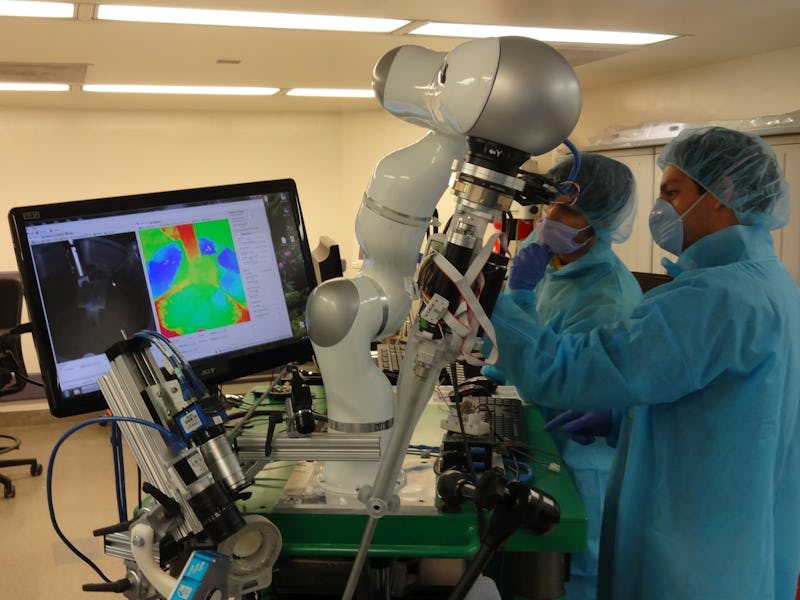The Smart Tissue Autonomous Robot Can Perform Surgery Without Doctors
When a single missed-stitch means a leaky bowel, eliminating human error means a lot.

It’s hardly news anymore when a robot outperforms a human for the first time at a mental or physical task. But this one’s kind of a big deal: Now robots can autonomously perform soft-tissue surgeries, including suturing together severed intestines.
Of course, robotic surgery is nothing new. But most processes rely on an actual surgeon to guide every motion of the robotic arms, like VR for open wounds. This sort of system allows surgeons to get into small places where hands won’t fit, but it doesn’t eliminate the risk of a hand-slip, severing a crucial blood vessel.
Autonomous surgery, where an operator tells the robot what to do and then just lets the robot do it, has so far been limited to hard tissues, like bones, because they don’t move around much. Imagine instead the complex skills involved in stitching together two floppy ends of a severed intestine — every move the surgeon makes affects the position of the material she is working with, which she has to adjust to in real time.
But a team of medical researchers solved this problem, by developing an optical system coupled with an algorithm that allows the robot-surgeon to keep track of the target tissues. The findings were published this week in Science. They taught the robot to suture together the severed bowel of a pig, with a little bit of help and guidance from a human surgeon, and found that it did surprisingly well.
Although the system, which the researchers called Smart Tissue Autonomous Robot or STAR, is for now significantly slower than a human surgeon, it can put sutures closer together, and with fewer errors. That means a lot when you’re trying to sew back up a tube of tissue that will soon have fluids flowing through it. In the future, advancements in this system could make soft tissue repair surgery less error-prone, less invasive, maybe even cheaper and faster than the alternative.
The STAR system integrated NIRF and 3D plenoptic vision, force sensing, submillimeter positioning, and actuated surgical tools.
Human surgeons won’t be out of a job any time soon, but those with an interest and aptitude for robots will do particularly well in the robotic future of operating rooms.